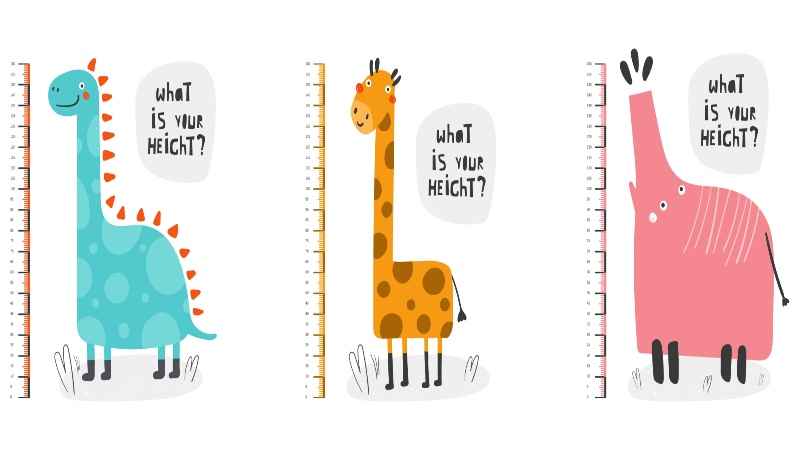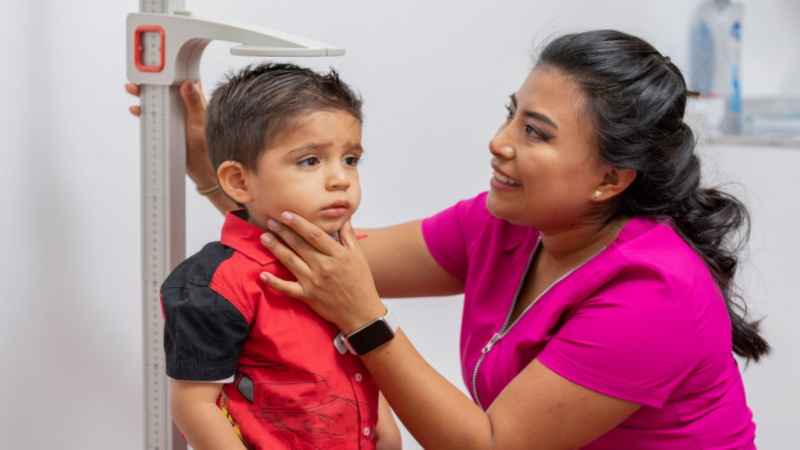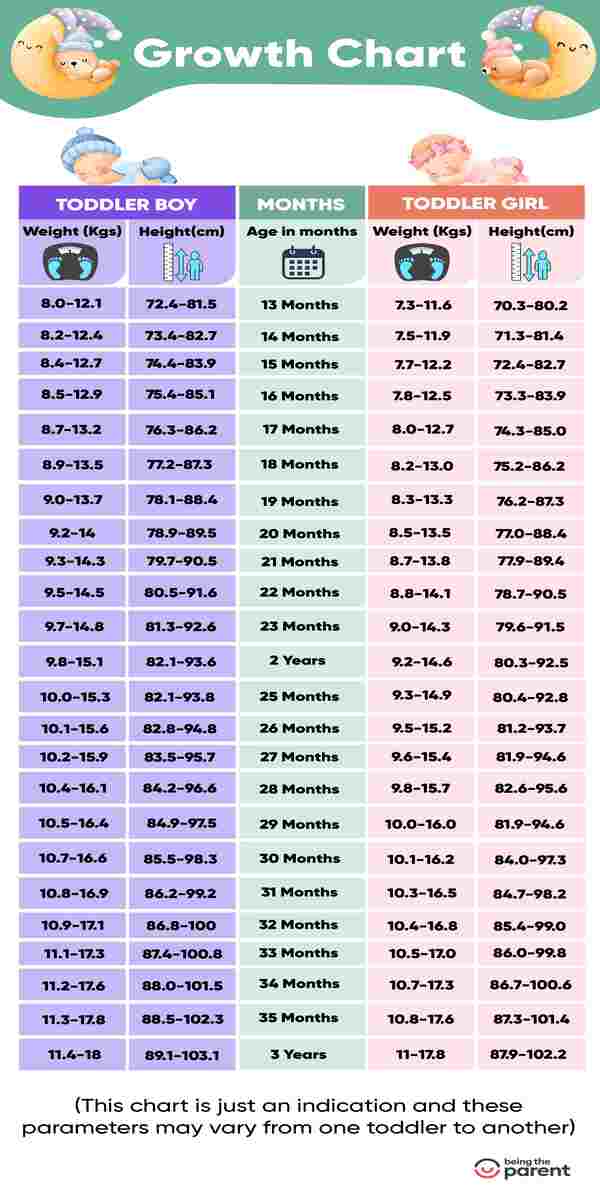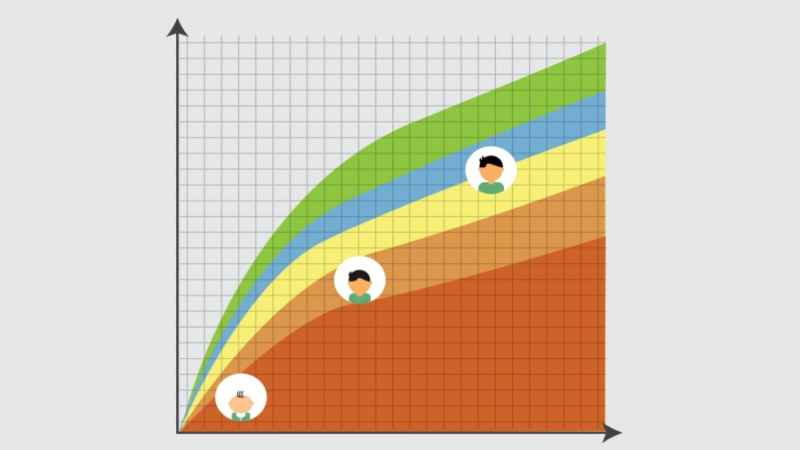
As a parent. it is completely natural to worry about your toddler’s growth. Wondering whether they are eating enough or not, comparing their height and weight to those of other toddlers their age, is normal for a parent. But, what parents need to remember is that all kids are different, and grow at their own pace. A lot of factors contribute to their growth, the most important being their DNA.
You would have seen your toddler’s pediatrician plot certain measurements on a chart at their regular health checkups. Well, these interesting lines are the height and weight charts for toddlers that the doctor uses to assess their growth. Find out more about these charts below.
What is a Growth Chart?

Growth charts are important tools that your toddler’s pediatrician uses to assess the growth and overall development of your little one (1). They are in the form of percentile curves that track the growth of toddlers. They give an idea of how your toddler is growing in comparison to toddlers of their age and sex. When the pediatrician plots your toddler’s weight and height on the chart, those measurements land on certain percentile lines:
- The higher the percentile line, the bigger your toddler is as compared to other toddlers of their age and sex
- The lower the percentile line, the smaller is the toddler, whether it is for height or weight
Why do Doctors Use a Growth Chart For Kids?

Whenever you take your toddler to the doctor’s appointment, they will assess their growth in the form of growth charts. So, these growth charts are a standard part of a toddler’s assessment. Doctors find these charts useful to track the development of kids and identify any developmental delays at an early stage. They can help pinpoint any nutritional or medical issue. It can help in providing early intervention (2). Hence, it can help detect underweight, overweight, and short stature at an early age.
Toddler Height and Weight Charts by Month

Factors Affecting a Kid’s Height And Weight

Every kid grows differently and a lot of factors contribute to this difference. Some of the important factors affecting a toddler’s height and weight are:
1. Heredity
Genes play a major role in determining a toddler’s weight and height (3). Parents transmit physical characteristics to their kids through these genes. Height and weight are majorly determined by heredity.
2. Nutrition
It is one of the critical factors for growth. Malnutrition can cause developmental delays and growth retardation (4). On the contrary, overeating can cause obesity and other health problems.
3. Socio-economic Status
The socio-economic status of a family also plays a key role. Toddlers from poorer families might not get access to good nutrition, resulting in growth retardation.
4. Proper Sleep
Enough sleep is essential for the proper growth and development of toddlers. During deep sleep, the body releases hormones that promote growth. Not getting enough sleep for a longer time may interfere with growth.
5. Hormone
These chemical messengers play a role in growth. Growth hormone regulates the general development of toddlers. Kids with growth hormone deficiency develop at a slower pace than others and have a shorter height (5). Thyroid and sex hormones also play a role in growth.
[Read : Obesity in Toddlers]
What is a Growth Chart Percentile And What Does it Mean?

Growth charts use percentiles to determine the overall growth of a toddler. They record the weight, height, and head circumference of your toddler. The vertical axis represents the measurement and the horizontal axis represents the age of the toddler.
If your toddler is on the 50th percentile of weight, then it means that they are right in the middle of the normal weight range. In other words, it means that 50% of toddlers of their age are heavier and 50% are lighter.
What is The Ideal Percentile For Your Toddler?
Being on a higher or a lower percentile does not mean that your toddler is not healthy (6). So, there is no ideal percentile, as kids also come in all shapes and sizes like adults. A toddler at the 5th percentile can be as healthy as a kid in the 95th percentile.
Can a Growth Chart Indicate a Problem With Your Toddler?

A changing pattern in the growth curve can signal a problem. Some of these patterns are:
- When your toddler’s weight or height percentile changes from a pattern that they have been following,. For example, if your toddler has been in the 75th percentile for height and weight for 3 years and then the height drops to the 50th percentile at the age of 4, that might signal a growth problem as the toddler is not following their usual growth pattern. Changing growth patterns don’t always depict a problem, as they are normal from time to time.
- When your toddler’s height does not increase much as compared to their weight. For example, if your toddler is in the 30th percentile of their height and their weight is in the 80th percentile, that means they are 30 percent taller and 80 percent heavier than kids of the same age. This might be a problem.
So, these height-weight growth charts for toddlers form a really important tool in assessing their growth and development. It is also essential to know that these charts are just a benchmark, and all toddlers grow at different rates. The most important thing is whether your toddler is growing steadily or not. Make sure that your little one eats healthy and sleeps well to have healthy growth.
[Read : A Balanced Diet For Toddlers]
FAQ’s
1. Are All Kids Measured on One Growth Chart?
No, all kids are not measured on a single chart. Girls and boys have different growth charts as they grow at different rates and patterns.
2. What Measurements Are Put On The Growth Charts?
Growth charts give an insight into a child’s development. They compare the height, weight, and head circumference of a kid against kids of the same age.
3. Why Is Head Circumference Measured?
Measuring head circumference gives an idea about the growth of the brain and the development of the central nervous system. It can help in detecting conditions like hydrocephalus and microcephaly.
4. Is It Normal For Toddlers To Drop the Percentile?
A drop in weight or height percentile is pretty common in toddlers. In the first two to three years, it is very common to see a shift in the growth curve either upwards or downwards. This is usually normal but in a few cases, it might indicate a health issue.
References
- The toddler who is falling off the growth chart – [https://www.ncbi.nlm.nih.gov/pmc/articles/PMC3474389/]
- A health professional’s guide for using the new WHO growth charts – [https://www.ncbi.nlm.nih.gov/pmc/articles/PMC2865941/]
- Is height determined by genetics? – [https://medlineplus.gov/genetics/understanding/traits/height/]
- Child growth – [https://www.who.int/health-topics/child-growth#tab=tab_1]
- Growth Hormone Deficiency in Children – [https://www.urmc.rochester.edu/encyclopedia/content.aspx?ContentTypeID=90&ContentID=P01952]
- Taking the confusion out of reading a growth chart – [https://www.osfhealthcare.org/blog/taking-the-confusion-out-of-reading-a-growth-chart/]
Read Also: Is My Toddler Underweight?

